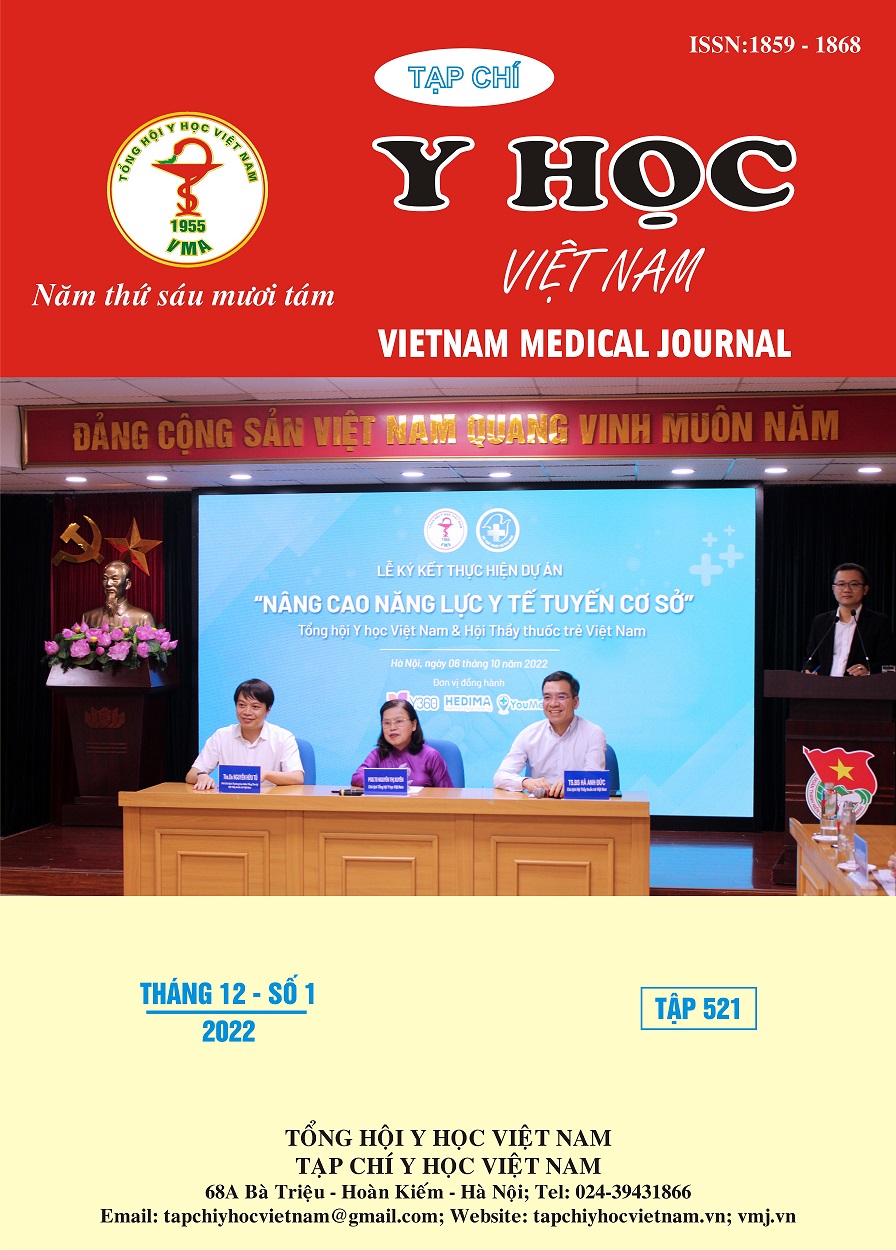CLINICAL FEATURES, MAGNETIC RESONANCE IMAGING OF CORTICOSPINAL TRACT AND PROGNOSIS OF MOTOR FUNCTION RECOVERY AFTER ISCHEMIC STROKE
Main Article Content
Abstract
Object: To evaluate the axonal injury and to predict the motor function recovery in supratentorial acute ischemic stroke patients. Method: Cross-sectional descriptive study was performed on 31 patients, who had a supratentorial ischemic stroke within seven days, and had an MRI at Bach Mai hospital from July 2021 to July 2022. Result:The proportion of male patients with ischemic stroke predominated (61,3%). Hemiplegia was the most common symptom in ischemic stroke which damaged the path of corticospinal tract. At three months after stroke,no patient had severe NIHSS score (0%); the percentage of patients with mild NIHSS and moderate NIHSS was 61,3% and 38,7%, respectively. According mRS, 25 patients (80,6%) recovered well after three months.The patient group, who had the axons did not go through the infarct lesion, were higher at the rate of better motor function recovery after three months than the other groups who had the axons go through partly or completely inside the infartion lesion (respective rates were 64,5% and 16,1%); p<0,05. FA index of the axons in the infarct side of the poor recovery group was smaller than the well recovery group, p<0.05. Conclusion: The axonal signal, location versus the infarct lesion, and FA index of the axons in the infarct side are the factors that significantly predictive of motor recovery after three months in ischemic stroke patients.
Article Details
Keywords
Diffusion tensor imaging, Corticospinal Tract, Acute ischemic stroke, Fractional anisotropy
References
2. Vũ Duy Lâm. Đánh giá tổn thương bó tháp và một số chỉ số của cộng hưởng từ khuếch tán liên quan với chức năng vận động của bệnh nhân nhồi máu não. 2019;(Viện nghiên cứu khoa học y dược lâm sàng 108).
3. Jellison BJ, Field AS, Medow J, Lazar M, Salamat MS, Alexander AL. Diffusion tensor imaging of cerebral white matter: a pictorial review of physics, fiber tract anatomy, and tumor imaging patterns. AJNR Am J Neuroradiol. 2004;25(3):356-369.
4. Nelles M, Gieseke J, Flacke S, Lachenmayer L, Schild HH, Urbach H (2008). Diffusion tensor pyramidal tractography in patients with anterior choroidal artery infarcts. AJNR American journal of neuroradiology, 29(3):488-93.
5. Lai C, Zhang SZ, Liu HM, et al. White matter tractography by diffusion tensor imaging plays an important role in prognosis estimation of acute lacunar infarctions. Br J Radiol. 2007; 80(958):782-789.
6. Ali GG, Elhameed AMA (2012). Prediction of motor outcome in ischemic stroke involving the pyramidal tract using diffusion tensor imaging. The Egyptian Journal of Radiology and Nuclear Medicine, 43(1):25-31.
7. Kim KH, Kim YH, Kim MS, Park CH, Lee A, Chang WH. Prediction of Motor Recovery Using Diffusion Tensor Tractography in Supratentorial Stroke Patients WithSevere Motor Involvement. Ann Rehabil Med. 2015;39(4):570-576.


